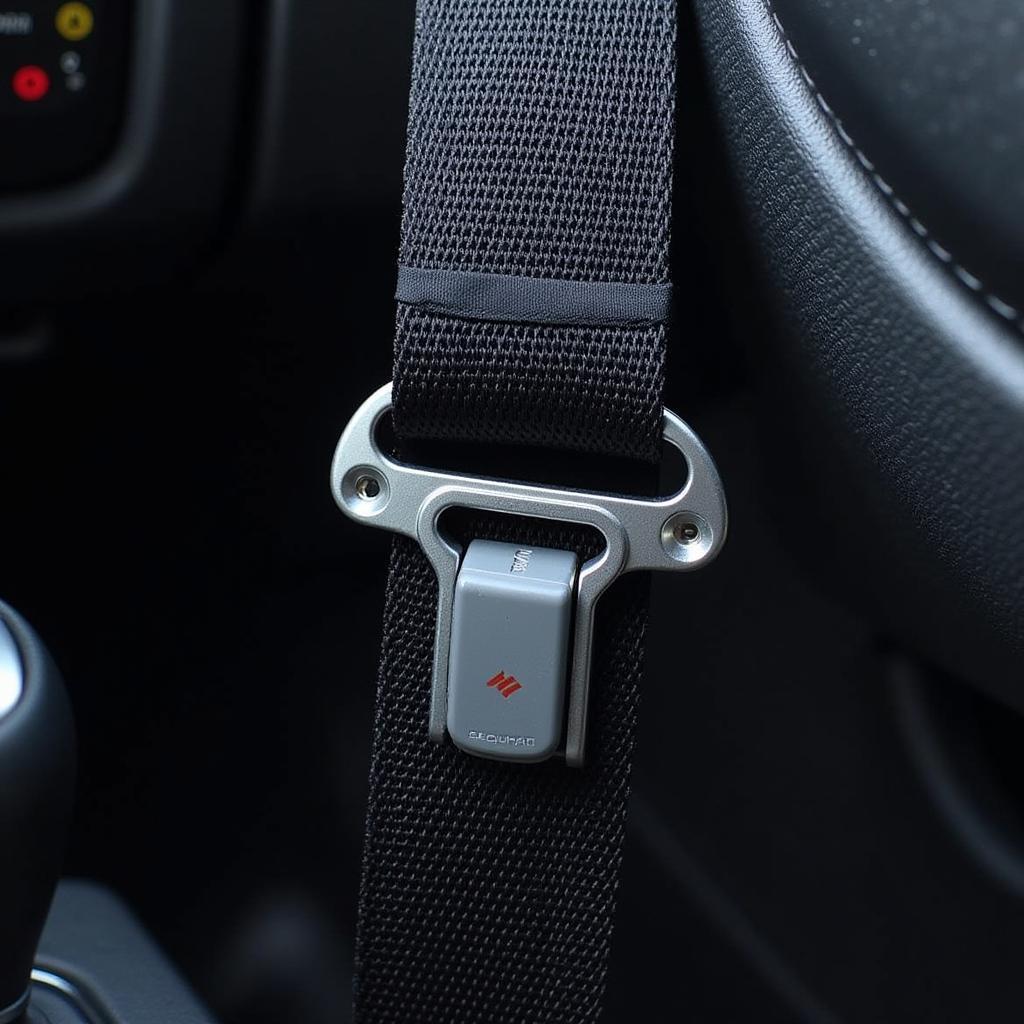The CPP brake light warning switch is a critical component in your vehicle’s safety system. It’s responsible for activating your brake lights when you press the brake pedal, alerting other drivers to your actions. A malfunctioning switch can lead to a variety of issues, from a simple warning light on your dashboard to complete brake light failure, putting you and others at risk. This article will delve into the common problems associated with the CPP brake light warning switch, how to diagnose them, and how to implement solutions, including remote software installation and programming.
Understanding the CPP Brake Light Warning Switch
The CPP (Constant Pressure Proportioning) brake light warning switch is typically located near the brake pedal assembly. It’s a relatively simple device, designed to detect when the brake pedal is depressed and close a circuit, activating the brake lights. However, despite its simplicity, it can be susceptible to various issues. Understanding its function is the first step in effective troubleshooting.
Common Problems with the CPP Brake Light Warning Switch
Several issues can arise with the CPP brake light warning switch, impacting its functionality and safety. These include:
- Brake lights constantly on: This usually indicates a stuck switch or a short circuit in the related wiring.
- Brake lights not working: This can stem from a faulty switch, blown fuse, damaged wiring, or even a problem with the brake light bulbs themselves.
- Intermittent brake light operation: This frustrating issue often points to a loose connection, a corroded switch, or internal damage within the switch itself.
- Brake light warning light illuminated on the dashboard: While this could indicate a problem with the switch itself, it can also point to other brake system issues.
Diagnosing the CPP Brake Light Warning Switch
Before jumping to conclusions, it’s essential to diagnose the problem accurately. Here’s a step-by-step guide:
- Check the brake light bulbs: A simple burned-out bulb can mimic a switch problem.
- Inspect the fuse: Locate the brake light fuse in your vehicle’s fuse box and check if it’s blown.
- Test the switch: Use a multimeter to test the continuity of the switch. This will tell you if the switch is functioning correctly.
- Inspect the wiring: Look for any signs of damage, corrosion, or loose connections in the wiring harness connected to the switch.
 Testing CPP Brake Light Switch with Multimeter
Testing CPP Brake Light Switch with Multimeter
Repairing or Replacing the CPP Brake Light Warning Switch
Once you’ve diagnosed the problem, you can proceed with the appropriate repair.
- Replacing the switch: In most cases, replacing the faulty switch is the most effective solution.
- Repairing the wiring: If the issue lies with the wiring, repair or replace the damaged sections.
- Remote Software Installation and Programming: In modern vehicles, the CPP brake light warning switch may be integrated with the vehicle’s electronic control unit (ECU). This means that software updates or recalibration may be necessary. Remote software installation and programming can offer a convenient and efficient solution for such issues.
Why Choose Remote Software Solutions?
Remote software solutions offer several advantages:
- Convenience: No need to visit a repair shop.
- Cost-effectiveness: Often less expensive than traditional repairs.
- Time-saving: The process is usually quicker than physical repairs.
- Expert Support: Access to qualified technicians who can diagnose and resolve issues remotely.
“Remote diagnostics and programming are transforming the automotive repair industry,” says John Smith, Senior Automotive Electrical Engineer at Remote Auto Solutions. “It allows us to address problems quickly and efficiently, minimizing downtime for drivers.”
How to Choose a Remote Service Provider
Selecting the right remote service provider is crucial.
- Expertise: Ensure they specialize in your vehicle’s make and model.
- Reputation: Look for providers with a proven track record.
- Security: Verify their security measures to protect your vehicle’s systems.
- Customer Support: Choose a provider with reliable and accessible customer support.
Conclusion
The CPP brake light warning switch is a vital safety component. Addressing issues promptly is crucial for your safety and the safety of others. Whether it’s a simple bulb replacement or a more complex software update, understanding the problem and choosing the right solution is essential. Remote software installation and programming offers a modern and efficient approach to resolving many CPP brake light warning switch issues.
“Remember, regular maintenance and timely repairs are key to ensuring the optimal performance and safety of your vehicle,” adds Maria Garcia, Lead Automotive Technician at Auto Diagnostics Inc.
FAQ
-
What is a CPP brake light warning switch?
A CPP brake light warning switch activates your brake lights when the brake pedal is pressed. -
What are the signs of a faulty CPP brake light warning switch?
Signs include brake lights constantly on, brake lights not working, intermittent operation, or a warning light on the dashboard. -
How can I diagnose a faulty CPP brake light warning switch?
You can check the bulbs, fuse, test the switch with a multimeter, and inspect the wiring. -
What are the repair options for a faulty CPP brake light warning switch?
Options include replacing the switch, repairing the wiring, or remote software installation/programming. -
What are the benefits of remote software solutions?
Benefits include convenience, cost-effectiveness, time-saving, and expert support. -
How can I choose a remote service provider?
Look for expertise, reputation, security measures, and reliable customer support. -
Why are functioning brake lights important?
Functioning brake lights are crucial for road safety, alerting other drivers to your actions and preventing accidents.


